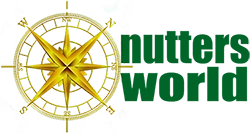Ancient Mediterranean Shipyards and Harbours
Ayn Soukhna: Ancient Egypt's Red Sea Port & Shipyard (c. 2400-1850 BC)
Ayn Soukhna was an ancient Egyptian harbour and shipyard on the Red Sea. Discoveries at this site, active from the Old to Middle Kingdom, challenges the notion of a river-bound civilization and reveals their sophisticated maritime capabilities.
By Nick Nutter on 2025-09-4 | Last Updated 2025-09-4 | Ancient Mediterranean Shipyards and Harbours
This article has been visited 1,277 times

Ayn Soukhna
Ayn Soukhna: Ancient Egyptian Red Sea harbour c 2400 – c 1850 BC
For centuries, the popular understanding of ancient Egyptian civilization has been tied almost exclusively to the Nile River valley, with its colossal pyramids and monumental temples defining a society focused on its life-giving waterway. However, recent archaeological breakthroughs have revealed a far more complex and outward-looking culture, one that was not only masters of their riverine world but also accomplished seafarers. The discovery and ongoing excavation of the ancient shipyard at Ayn Soukhna (also spelt Sukhna and Sokhna), situated on the western shore of the Gulf of Suez, has become a pivotal point in this re-evaluation.
A site active from the Old Kingdom through the Middle Kingdom, Ayn Soukhna provides crucial physical evidence, including workshops and storage facilities, which demonstrates a sophisticated and sustained Egyptian maritime presence on the Red Sea.
By examining the finds at Ayn Soukhna—including rock-cut storage galleries for ship components, copper smelting workshops, and extensive hieroglyphic inscriptions we can show that the site was not merely a temporary harbour, but a sophisticated logistical hub that facilitated a consistent and organized network of naval expeditions, fundamentally challenging the long-held notion of ancient Egypt as a civilization confined to its river valley.
The intermittent use of the site indicates that its existence was linked to the state's need for specific resources, primarily copper and turquoise from the Sinai region.
Do you enjoy my articles? For your reading pleasure, this website does not carry third party ads. You could help me write more articles by buying me a cup of coffee.
When was the Ayn Soukhna shipyard discovered?
Ayn Soukhna was first brought to the attention of archaeologists in 1999 by Professor Mahmud Abd El Raziq. The site has been under continuous investigation since 2001 by a joint French and Egyptian archaeological team.
Where is Ayn Soukhna
Ayn Soukhna is a port and resort town located in the Suez Governorate of Egypt. It is approximately 120 kilometres (75 miles) east of Cairo and 55 kilometres (34 miles) south of the city of Suez. The name "Ayn Soukhna" is Arabic for "the hot spring," which refers to the nearby sulphur springs at the base of the Gebel Ataqa mountains.
Description of the Ayn Soukhna shipbuilding site
The archaeological evidence from Ayn Soukhna indicates a strong likelihood that the site functioned not only as a point of departure but also as a critical hub for shipbuilding and maintenance. The most compelling evidence for this function is a series of ten large, rock-cut galleries excavated into the hillside, which served as purpose-built storage facilities for boats. Each gallery had a ramp leading to a sturdy door into the gallery itself. These galleries, measuring up to 20 metres in length, were designed to protect the wooden ships from the harsh desert climate between missions. The entrances to three of these galleries were even enclosed within a well-built, rectangular lean-to structure, which had a door opening into a large hallway with a roof supported by wooden columns. The galleries served as both living quarters and storage facilities.
Within these galleries, archaeologists have unearthed significant artifacts related to seafaring and construction, including wooden planks and boat components. The presence of these materials suggests that the boats were not simply pulled ashore but were likely disassembled and stored in the galleries, with repairs and reconstruction taking place on-site.
Galleries G2 and G9 yielded significant finds. Two large limestone anchors were unearthed at the entrance to gallery G9.
Inside G2 and G9, the charred remains of two dismantled Middle Kingdom ships were discovered, meticulously stored in a specific layout. These remains included up to five layers of large cedar planks, each about 10 cm thick and 30 cm wide, stacked in three parallel rows. The planks showed characteristic Egyptian shipbuilding techniques, combining mortise and tenon joints with ligatures, and featured the systematic use of double joints common in seagoing vessels. The timbers were laid out on wooden rods, possibly from rowing equipment. Analysis suggests these were parts of two distinct boats, each 14 to 15 meters long.
The Labour Camp and Daily Life at Ayn Soukhna
In addition to the galleries and port facilities, archaeologists have conducted extensive excavations of the workers' camp, which offers a singular perspective on the daily life of the labourers. In contrast to many ancient Egyptian sites, the settlement at Ayn Soukhna was a temporary, highly organized encampment constructed to support the expeditions. The camp was a self-sufficient unit with a clear layout that included dwellings, workshops, and facilities for food preparation that catered for up to 4,000 people. This organized structure is indicative of the state-sponsored character of the expeditions. Evidence of daily activities is extensive, as excavations have revealed numerous baking and cooking facilities, suggesting large-scale food production to sustain the considerable workforce. The discovery of various tools and the remains of metallurgical kilns points to a dynamic environment where workers engaged in specialized tasks, from smelting copper to the construction and repair of vessels.
When was the Ayn Soukhna shipyard in operation?
The archaeological record establishes that Ayn Soukhna was a key strategic asset during two primary phases of the Pharaonic era: the Old Kingdom (c. 2370-2153 BC) and the early Middle Kingdom (c. 1950-1910 BC). The site was not a permanent settlement, but a temporary, intermittent harbour utilized for large-scale expeditions.
Evidence from the Old Kingdom includes inscriptions and galleries, with a stela found at the site bearing the name of King Djedkare-Isesi from the end of the Fifth Dynasty. The site's most active period, however, was the Middle Kingdom, when numerous inscriptions and artifacts dating to the reigns of Mentuhotep IV and Amenemhet I were discovered.
Therefore, Ayn Sukhna was used between approximately 2400 BC (Dynasty 5, Old Kingdom) and the end of Dynasty 12 (c. 1850 BC), with a general statement that its occupation extended to the New Kingdom.
Inscriptions found at Ayn Sukhna
An inscription-bearing rock wall dominates the archaeological area.
Middle Kingdom inscriptions
Many official reports on missions are represented, often detailing the specific year of a pharaoh's reign.
Stela of Mentuhotep IV (c. 2000 BC, Dynasty 11): This is the most ancient, engraved stela, bearing the full-length representation and titulary of Mentuhotep IV.
It outlines an expedition in Year 1 that involved the "arrival of the king’s men" with a workforce of 3000, tasked "to bring back turquoise, copper, bronze (?), and other fine products of the desert".
Stela of Amenemhet I (7th regnal year, Dynasty 12): Found next to Mentuhotep IV's stela.
This stela mentions 4,000 men recruited for the same purpose as the Mentuhotep IV expedition (bringing back turquoise, copper, bronze, and other fine products), explicitly referring to turquoise, which was only found in South Sinai.
Hieratic inscription from year 9 of Sesostris I (Amenemhet I’s successor, Dynasty 12):
The stella indicates that an official was dispatched to the ‘mining land’, a term specifically referring to the mining zone in Sinai at that time.
Inscribed stela from year 2 of Amenemhet III (c. 1850 BC, late Dynasty 12): Lists the names of several officials involved in an expedition that passed through Ayn Sukhna. One official, Ity, son of Isis and ‘repeller of scorpions’, is also attested in two inscriptions from the same year at Wadi Maghara, the heart of the Sinai mining zone.
Hieratic inscriptions on ceramic material: Abundant ceramic material from Dynasty 12 found in the galleries sometimes bears these ink inscriptions. An example is a late Middle Kingdom jar with the name of the "Assistant of the Treasurer" (Xry-a n jmy-r xmt) Iki.
Old Kingdom Inscriptions (discovered 2009-2010)
Provide substantial evidence of earlier occupation at Ayn Sukhna.
Inscription in Gallery G6 (King Djedkare-Isesi, c. 2400 BC, Dynasty 5): Found 3 metres into gallery G6 on a plastered wall, written in black ink (approx. 65 x 40cm). Its structure is reminiscent of the Abusir papyri used for royal mortuary temple accounts.
Though incomplete, it clearly followed the king’s titulary (beginning with his Horus name) with a narrative detailing the expedition's main aspects including means of transportation, itinerary, and goods brought back. The last section likely recorded staff categories. Notably, it mentions kbnt-boats, a ‘Byblos’ type vessel used for long seafaring expeditions, making it the most ancient mention of such boats in an Egyptian document. Sealings of Djedkare-Isesi had also been previously discovered at the site.
Expedition commemoration text in Gallery G1 (King Isesi, around year 14 of his reign, Dynasty 5): Found in the largest gallery, inscribed in black ink on a plastered wall.
This inscription dates a previously unknown expedition to the Sinai to the seventh census of King Isesi. It names the expedition leader, Sed-Hetepi, and provides one of the first clear attestations of the ancient Egyptian toponym for the Sinai Peninsula, ‘the Terraces of turquoise’ (xtjw mfkAt). Sed-Hetepi is also recorded in an inscription from Wadi Maghara, which details a 1,400-strong expedition.
The significance of the Ayn Soukhna shipyard
The ancient Egyptians have long been known for their organisational ability within the Nile valley. Periodically, they gathered huge numbers of people together, housed and sustained them, and used them on monumental projects.
The harbour - shipyard site at Ayn Soukhna and the contemporaneous site at Mersa/Wadi Gawasis demonstrate that the Egyptians used the same project management skills to organise, not just the building of suitable ships, but the expeditions themselves, to the Sinai Peninsular in the former case and to the fabled ‘Land of Punt’ in the latter.
The archaeological findings at Ayn Soukhna present a comprehensive view of a highly functional, specialized site that was integral to ancient Egypt's state-controlled economy. From its timeline of operation and its economic role to the evidence of shipbuilding and the daily life of its workers, the site illustrates the administrative and logistical power of the Old and Middle Kingdoms. The evidence unearthed at Ayn Soukhna not only corroborates the historical records of ambitious expeditions but also provides tangible substantiation of the advanced organizational and technological capabilities required to support them.
When did Ayn Soukhna fall into disuse?
Based on archaeological findings, Ayn Soukhna was not permanently abandoned but saw its role as a major port for large-scale, state-sponsored expeditions decline after the Middle Kingdom (c. 1950-1910 BC). Its use was always intermittent, tied to the specific periods when the centralized state organized ambitious missions to the Sinai Peninsula.
The reasons for its eventual disuse for these purposes were likely connected to broader shifts in Egyptian history, including the decline of central authority at the end of the Middle Kingdom and the potential depletion of easily accessible resources in the nearby mines.
Notes on ancient Egyptian shipbuilding
It is important to realise that the ancient Egyptians built two types of ships, one type being for ceremonial purposes and very occasional use on the River Nile. The second being functional seagoing vessels.
The construction of ancient Egyptian seagoing ships, like those found at Ayn Soukhna and Wadi el-Jarf (Chapter 1), differed from that of ceremonial boats, like the Khufu ship, in both their design and intended use. While both types of vessels were built using a shell-first construction method and used mortise-and-tenon joints, their overall purpose dictated significant differences in their final form.
Functional vs. Symbolic Design
Seagoing Ships: The ships built for the Red Sea were functional vessels designed for trade and transportation. They were built to be sturdy, often with a broader hull and higher freeboard to handle the open sea. Remains of these ships, like those at Mersa Gawasis (Chapter 3) and Wadi el-Jarf, show that they were often dismantled and stored in caves between voyages. This suggests a design that prioritized durability, strength, and the ability to be easily broken down and reassembled.
Evidence from sites like Mersa Gawasis shows that seagoing ships were built with imported cedar and pine, and possibly other woods. The planks were joined with a combination of mortise-and-tenon joints and lashings. The use of double joints seems to have been a specific feature of some seagoing vessels, suggesting an emphasis on a stronger hull for rougher waters.
Ceremonial Boats: The Khufu ship, a "solar bark," was a ceremonial vessel. Its design, with its high, curving papyrus-like ends, was symbolic rather than practical. Although it shows signs of having been in water, it was not built for long-distance travel on the open sea. Its purpose was to transport the deceased pharaoh in the afterlife, a symbolic journey with the sun god Ra.
The Khufu ship was a masterpiece of Old Kingdom woodworking. It was made almost entirely from imported Lebanese cedar, a very expensive and high-quality wood. The planks were meticulously carved to fit together, creating a "joggled" edge that interlocked like puzzle pieces. The planks were then "sewn" together using ropes made from Halfah grass, which ran through V-shaped channels carved into the inside of the planks. There were no nails or metal fasteners. This method, while incredibly strong for its time, was labour-intensive and more for aesthetic and symbolic purposes.
References
Abd el-Raziq, M., Castel, G., & Tallet, P. (2002). Les inscriptions d'Ayn Soukhna. Cairo: MIFAO 122.
Tallet, P. (2012). "Ayn Sukhna and Wadi el-Jarf: Two newly discovered pharaonic harbours on the Suez Gulf." British Museum Studies in Ancient Egypt and Sudan, 18, 127–148.
Castel, G., & Tallet, P. (2011). Ayn Soukhna II. Les ateliers métallurgiques du Moyen Empire. Cairo: FIFAO 66.
Tallet, P., & Abd el-Raziq, M. (2016). Ayn Soukhna III. Le complexe des galeries-magasins : rapport archéologique. Cairo: FIFAO 74.
Do you enjoy my articles? For your reading pleasure, this website does not carry third party ads. You could help me write more articles by buying me a cup of coffee.
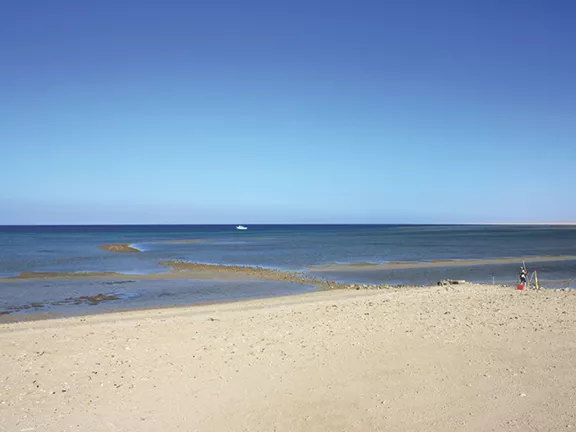 1: Egypt's Wadi al-Jarf c 2600 - 2560 BC
1: Egypt's Wadi al-Jarf c 2600 - 2560 BC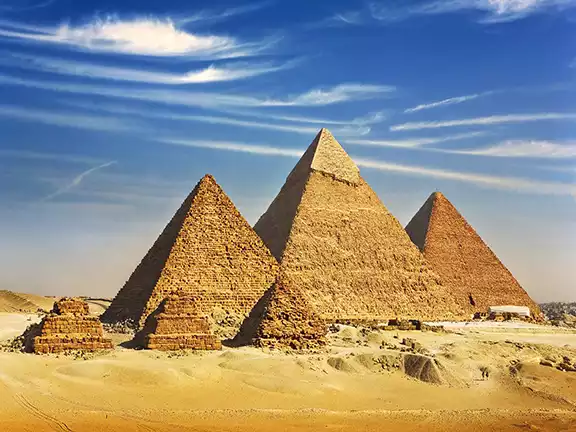 2: Egypt's Ro-She Khufu 2580 - 2500 BC
2: Egypt's Ro-She Khufu 2580 - 2500 BC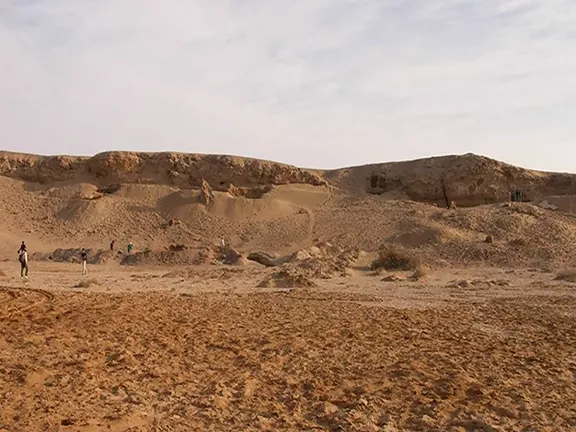 4: Egypt's Mersa/Wadi Gawasis c 2000 - 1500 BC
4: Egypt's Mersa/Wadi Gawasis c 2000 - 1500 BC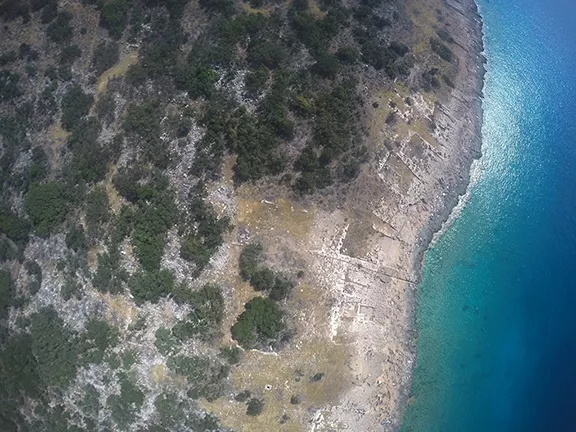 5: Dana Island, Turkey c 800 BC - 700 AD
5: Dana Island, Turkey c 800 BC - 700 AD